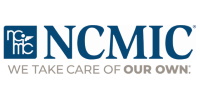After a period of information gathering and careful planning, the Palmer Chiropractic University System Board of Trustees has approved a number of resolutions and permanent appointments that will have a significant, positive impact on the future of Palmer. At their annual meeting held Feb. 4-5 in San Diego, Calif., the Board’s efforts focused on building a solid foundation from which Palmer can continue to be the leader in chiropractic education. This process resulted from a year of collecting information from a cross section of each Palmer campus. Among the resolutions announced by the Board are: Presidential Appointments: Donald Kern, D.C., and Peter Martin, D.C., were named president of Palmer College of Chiropractic and Palmer College of Chiropractic West, respectively. Their appointments are effective immediately. “We conducted a full and thorough evaluation of their performance during the past year and found that they both had achieved outstanding success in reaching the one-year goals the Board had set,” said John Huston, chair of the Board evaluation team. “During our interviews with staff and administrators, as well as from those who participated in the evaluation forums, we heard overwhelmingly that the greatest constituency of the colleges wanted this to happen. This will bring needed stability and the ability to move forward seamlessly with our program.” “The Board concluded that it would be in Palmer’s best interest to remove the interim titles and appoint each as president of their respective campuses,” said Vickie Palmer, chairman of the Board and great-granddaughter of D.D. Palmer, the founder of chiropractic. “These two exceptional individuals provide a great blend of experience and leadership, and we are fortunate to have them leading us forward.” Plans for an investiture ceremony marking their official appointments are underway. In addition, the Board determined that there also should be a President at the Florida campus. These three presidents will report directly to the Board of Trustees. The Board will immediately begin a search for a president of Palmer Florida. As announced on Jan. 31, Donald Gran, D.C., M.S.Ed., will serve as acting senior campus administrator of that campus while the search is conducted. Palmer’s new organizational structure will include a CEO position that will report directly to the Board and will deal with business issues and assure proper integration of the three campuses. This position will be open in the future. Until the position is filled, Mr. Larry Patten will continue to assist the Board with these matters. One College, Three Campuses: The Board reemphasized that Palmer is one college with three campuses. Because it will continue to focus its attention on assuring that it is the highest-quality chiropractic institution in the world, therefore, it will discontinue the use of the term “university.” “Universities are more commonly made up of colleges of multiple disciplines under one umbrella, which is the university. By the common definition, identifying Palmer as a university implies that we offer programs other than chiropractic, which isn’t the case,” explained Vickie Palmer. “Therefore, to eliminate confusion and to solidify and strengthen the Palmer brand nationwide, we will refer to ourselves as Palmer College of Chiropractic with our three campuses identified as Palmer College of Chiropractic, also known as The Fountainhead, Palmer College of Chiropractic-West and Palmer College of Chiropractic-Florida. Regardless of the campus name, we are dedicated to our students by ensuring that the educational program at each campus reflects the same quality of delivery as well as the same Palmer philosophy. We intend to be certain that is carried out.” The Fountainhead: The Board affirmed the significance of the Davenport campus as The Fountainhead of Chiropractic. “No other college in the world enjoys this distinction, since chiropractic began in Davenport,” said Vickie Palmer. “In a way, all chiropractic colleges and all chiropractors are part of the Palmer family since it all began here in Davenport, Iowa. Having additional campuses within Palmer does not and will not diminish the legacy of the Davenport campus. It simply provides those who wish to obtain a Palmer chiropractic education in another location an opportunity to do so. All students who complete our program will have earned the honor of being a Palmer graduate.” Clinics: The Board stated its commitment to ensuring that students are sufficiently prepared through a curriculum that includes a solid clinic experience. The clinical operation must be a seamless part of the curriculum at each campus. It was agreed that, in order to achieve that outcome, the curriculum must be driven with the clinical experience clearly in mind. Philosophy: The Board also agreed that Palmer and its three campuses are in the business of chiropractic education of the highest quality. It maintains a centrist view of chiropractic as defined by its mission, tenets and philosophy. The boundaries of this view include physiotherapy as part of the core curriculum, due to its potential benefit to chiropractic patients. This decision was based on research conducted by the ad hoc Education Committee. The statement of philosophy shared late last summer received strong support from Palmer faculty, staff and alumni. Enrollment: With a new emphasis on enrollment management, the Board approved opening a new position of Chief of Enrollment Management for which it will immediately begin a nationwide search. The campuses will also open up other necessary positions in this area to ensure that it has a quality team of enrollment management specialists to efficiently work with students wishing to enroll. Interim Positions: The College will now begin working on filling other positions that have been filled on an interim basis during the past year. This may include opening new positions in certain areas as deemed necessary by the College. Technology: The Board approved a new initiative to update the Davenport and West campuses with current technological resources. It has asked the administration to prepare an action and implementation plan. Educational Advisory Committee: The Palmer Board of Trustees is committed to establishing an advisory committee made up of selected alumni. This committee will work with the College as it works to continue to offer the best chiropractic education possible. The committee will also build upon the sense of pride that comes with a Palmer diploma by working to continually improve the Palmer experience. PCCW Location: There have been discussions in the past that the PCCW campus may move to a new city. The Board wishes to lay this idea to rest by affirming that the Palmer West campus will continue to be located in the bay area in California. Curriculum: Providing students with the skills to become a successful chiropractor is considered the highest priority. With that, the Board is committed to working with all constituencies to assess the curriculum and to ensure that it is working effectively. Current Board Members Attending the meeting in San Diego were: Vickie A. Palmer, H.C.D. (Hon.), chairman, Trevor Ireland, D.C, vice chair, Charles J. Keller, D.C., secretary, Hewett M. (Mack) Alden, D.C., Dennis J. Fitterer, D.C., Harley D. Gilthvedt, D.C., Merlyn A. Green, D.C., Michael J. Hahn, D.C., John Huston, Kenneth Koupal, Paul S. Peterson, D.C., William L. Wilke and Ex Officio Member Mark A. Heslip, D.C. John Willis, D.C., attended the meeting on behalf of Ex Officio Member Kirk Lee, D.C. Board member Kent M. Forney, J.D., was unable to attend. Frank Bemis, D.C., Fletcher Keith, D.C., and Byrd Krumbholz have completed their terms on the Board. The Board would like to thank them for their service and support of Palmer. Comments from Board Members “Change never comes without some pain,” said Dr. Keller, secretary of the Board. “However, the efforts of the Board over the past year have been so productive and provided such a clear direction for the future that whatever pain we have been through will, in the long run, prove to be worth it when we measure the value of our outcomes.” “We’ve implemented a new foundation of discovery that will help us establish a framework for a strong direction for the future of chiropractic education,” said Vickie Palmer. “This process has generated a new beginning for our colleges. I’m confident that the bold and aggressive initiatives put in place will ensure that Palmer continues to provide the highest-quality chiropractic education in the world.” “We have done our job,” added Trevor Ireland, D.C., vice chair of the Board. “We have worked diligently as a Board to ensure that we do what is right for Palmer. Our decisions were based on careful deliberations and, as a Board, we are together and strong in our resolve to see our initiatives carried through.” “I would also like to thank everyone–on all three Palmer campuses–who provided input to the Board over the past year,” added Vickie Palmer. “Your commitment and ongoing support are a strong testimony of the quality of individuals who are part of the Palmer family.” The next full Board meeting will be held in June. To learn more visit click on the link below:





